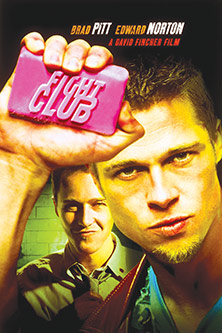Reading Between The Lines: Adaptation deviation: When movies strayed away and were better for it (Part II)
 CREDIT: 20TH CENTURY FOX
CREDIT: 20TH CENTURY FOXChuck Palahniuk's novel Fight Club got the Hollywood treatment and the adaptation ended differently - for the better. It got a nod from the author himself.
Books always get the short end of the stick for their big-screen blowups. The chief case of mistreating novels seems to be a complete disrespect for the source material, completely ignoring everything the book stood for. However, it isn’t always all bad. Here’s a complete of flicks that strayed away from their source.
Die Hard – Various books
Die Hard needs no introduction as a franchise. Bringing down the action hero from a bullet proof, unstoppable rage machine to a saltof- the-earth, just-as-squishy-as-therest- of-us everyman was a unique cinematic feat for the era of Rambo and John Matrix.
Launching Bruce Willis into stardom as a young, foul-mouthed, self-doubting cop just trying to make the best of a Christmas Eve gone horribly wrong, Die Hard’s source material is surprisingly pulpy.
Originally an adaptation of Nothing Lasts Forever, a sequel to Roderick Thorp’s novel The Detective, which received a 1968 adaptation starring Frank Sinatra, who lacked the interest in reprising his role as Joe Leland, resulted in the script floating around in Hollywood purgatory. At one point even being attached to Arnold Schwarzenegger.
Eventually, the script was reworked into being its own thing rather than a sequel to a now somewhat- forgotten film. We can all agree that the replacement of the aging Sinatra with a young, hip Bruce Willis, the compressing of events from three days to just one night among other changes, an action movie classic was born.
Oh, and if you’re interested in checking out Thorp’s novels, they’ve been brought back into print for Die Hard’s 25th anniversary.
Die Hard 2: Die Harder isn’t quite the classic of its original counterpart, making John McClane one of the most unfortunate characters in the history of cinema by thrusting him yet into another terrorist conspiracy, this time involving the sabotage of air traffic controls. This misfortune can be attributed to the original source material being an adaptation of the completely unrelated Walter Weger novel, 58 Minutes, being retooled as a Die Hard sequel.
Fight Club
Beware spoilers, all ye who enter here. But really, you only have yourself to blame if you already haven’t either read the Chuck Palahniuk coming-of-age novel starring 35-year-olds or seen its superb cinematic adaptation. In a move applauded by the author of the novel himself, the original ending for the novel Fight Club was completely retooled from being vaguely sequel hook-like to a resolution much more melancholy but emotionally satisfying.
Hannibal
The follow-up to Silence of the Lambs had a mixed reception to say the least. Lacking Jodie Foster and a lot of the artistic elements that made its predecessor a strong cinematic piece, Hannibal still managed to stand on its own. Probably the most controversial change to the movie from the book was – arguably for better or for worse – the ending. The novel ended in Clarice Starling running away with Hannibal Lecter, together as lovers, rather than the movie’s sequel hook ending of Lecter being on the run yet again. Some would argue the novel’s ending as inferior, author-tract, some the movie’s ending as nothing more than fuel for another film. Whatever the truth may be, it’s definitely an interesting contrast between the two.













